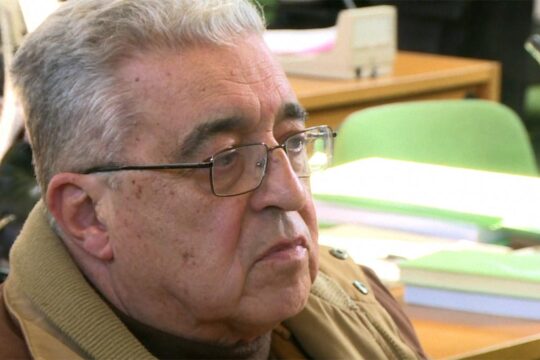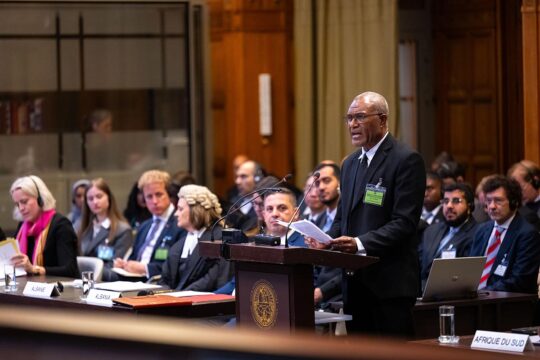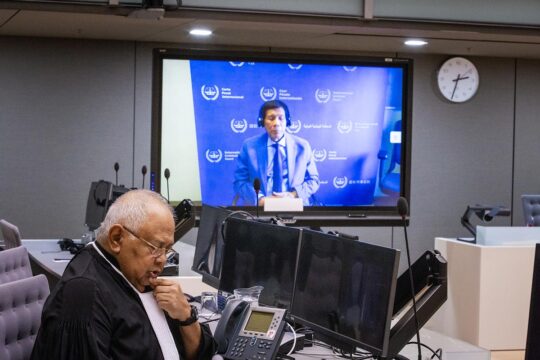Faced with an unprecedented crisis of the global ecosystem, UN Secretary General Antonio Guterres last year published a report entitled “Gaps in international environmental law and environment-related instruments: towards a global pact for the environment”, in which he noted that "the effective enjoyment of human rights" can only take place in "a healthy environment". Six months later an international conference held in Nairobi (Kenya) failed to bring about the "Global Environment Pact" that Guterres had called for, owing notably to opposition from Brazil and the United States. The ambition is to provide the planet with a unified body of international environmental law, and link it to international human rights law. Until such a text is adopted at the international level, regional courts can fill the gaps by linking human rights and environmental law, Guterres said in his report. Indeed, at least two regional human rights conventions -- the African Charter on Human and Peoples' Rights, and the Additional Protocol of San Salvador to the American Convention on Human Rights -- explicitly incorporate the right to a healthy environment.
"While the European Court of Human Rights has the most developed case law on the relationship between human rights violations and environmental law, it is the Inter-American Human Rights System that has the most daring case law in this area," says Brazilian researcher Camila Perruso, a research associate at the Collège de France and author of a thesis on "The right to a healthy environment in international law" presented last October at the universities of Paris Sorbonne and Sao Paulo.
This complex system is two-pronged. First, the Inter-American Commission on Human Rights (IACHR), a quasi-judicial body based in Washington DC, ensures compliance by states with the American Declaration of the Rights and Duties of Man (1948) and the American Convention on Human Rights or the "San José Convention" (1969) on Civil and Political Rights. It prepares country reports, examines petitions from individuals or groups of individuals and negotiates with States to ensure that the rights of applicants are respected. If these negotiations are not successful, the Commission refers the situation to the Inter-American Court of Human Rights, a judicial body based in San José, Costa Rica, which may also be seized by States for an advisory opinion. The United States and Canada, which have not ratified the San José Convention, do not recognize the Court.
"The jurisprudence of the Inter-American Human Rights System tends to progressively affirm the right to a healthy environment as a human right that can be argued in court," notes Perruso, "mainly in response to appeals by indigenous peoples. Several decisions support this observation. As early as 1985, ruling on a petition from representatives of the Amazonian Yanomami people in northern Brazil, the Commission considered that the environmental destruction caused by the construction of a highway to promote gold mining in the region constituted a violation of the "right to life" (Article 9 of the San José Convention) of this people whose way of life was closely linked to the integrity of the forest.
Cultural dimension of the right to property
But it was from the 2000s that the environmental claims of indigenous peoples became more frequent. In 2001, the Court issued a judgment in response to a petition from a Mayangna Amerindian community located in the town of Awas Tingni in Nicaragua. The Mayangnas complained that a forest concession had been granted to a private company by the State, without the State having taken the trouble to delimit their territory or consult them. In its judgment, the Court acknowledged a violation of the right to private property and dignity of the Awas Tingni community. The Mayangnas, it said, "have a tradition that is contrary to the privatization and commercialization of natural resources. The common understanding of the land - including as a spiritual place - and its natural resources is part of their customary law; their connection to the land, even if it is not written down, is part of their daily lives, and the right to collective property itself has a cultural dimension. In short, habitat is an integral part of their culture, passed on from generation to generation”. The Court added that "the concern for the conservation [of the forest] reflects a cultural manifestation of humans being part of nature and the world in which they live".
This decision had strong resonance for Native American indigenous peoples. In 2005, a group of Inuit filed a petition with the IACHR. It was the first climate action in the world. According to the petition, US greenhouse gas (GHG) emissions are causing degradation of the Arctic environment depriving Inuit of the right to enjoy their culture, which depends on the region's environmental integrity. Article 13 of the American Declaration of the Rights and Duties of Man, which guarantees the right to the benefits of culture, is violated. But after hearing the Inuit, the Commission refused to rule, arguing that it was not possible to establish a specific US responsibility for the GHG emissions that are causing the Arctic ice to melt.
"Greening" of case law
In the second half of the 2000s, environmental appeals by indigenous peoples continued to flow through the Inter-American Human Rights System. The Commission often referred them to the Court. There has been a real "greening" of the Court's case law since 2010, as Fernanda De Salles Cavedon Capdeville, a doctor of law at the University of Alicante (Spain), points out. She refers to three judgments -- concerning the Xákmok Kásek community in Paraguay (2010), the Kichwa indigenous people of Sarayaku in Ecuador (2012) and the communities of African descent displaced from the Cacarica River basin in Colombia (2013) -- that contribute to "strengthening the human right to a healthy environment". In all three cases, whether the applicants claimed to have been dispossessed respectively for agricultural, oil or military exploitation of their land, the Court reaffirmed the collective ownership of that land and acknowledged that their cultural identity was linked to the integrity of the land. In 2015, a judgment in favour of the Kaliña and Lokono peoples in Suriname went even further. The Court opposed their expulsion from part of their lands to make way for a mining concession and a natural park, affirming their collective legal personality, collective ownership of their land and recognizing that their "symbiotic way of living" with the environment was the best way of protecting it.
The Court's judgments are in theory binding: it monitors their application, which is often slow because the Court has no means of constraint on States. Depending on the case, States are ordered to dismantle the infrastructure built or to clean up the land, and each time to return it to the claimant peoples by undertaking with them a formal demarcation process for their territory. As a result of these judgments, the right to a healthy environment is becoming established, as reaffirmed by an advisory opinion of the Inter-American Court of Human Rights of 15 November 2017. When asked by Colombia about the obligations of States to respect right to life and personal integrity in maritime areas in the case of polluting infrastructure projects, the Court stated that the "right to a healthy environment" was now an "autonomous" human right and "distinct from the environmental implications related to other [human] rights such as the right to life or personal integrity". This right protects the environment and "nature" "as such", the Court insisted, and "not only to prevent attacks on health and other human rights".
"International human rights treaties are living instruments whose interpretation must adapt with time and, more precisely, to current living conditions," the Court said in its 2001 decision in favour of the Mayangnas. In the space of fifteen years, the Inter-American Human Rights System has transformed the right to a healthy environment from a non-justiciable economic, social and cultural right to a human right which if not necessarily applied is at least required by case law. Is this a new guarantee of protection for endangered ecosystems on the American continent, particularly in the Brazilian Amazon? "National courts must be able to apply the jurisprudence of the Inter-American Human Rights System," replies Perruso. "Regardless of the policies of its current government, Brazil has a Constitution that protects the rights of indigenous peoples and has ratified American human rights laws. If the Brazilian courts are not prompt enough, indigenous peoples can therefore turn to the Inter-American Human Rights System" to protect both the environment and their fundamental rights.







